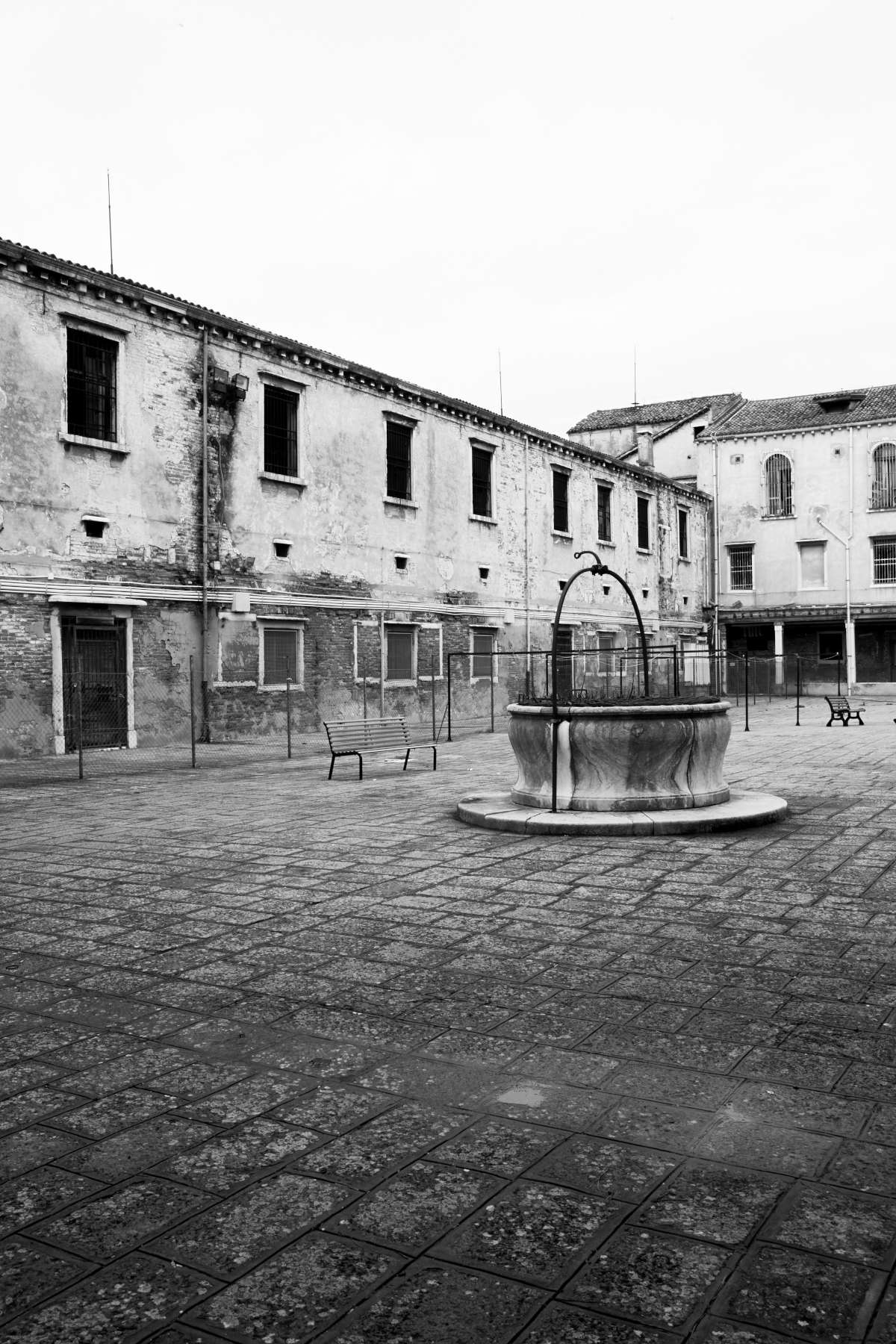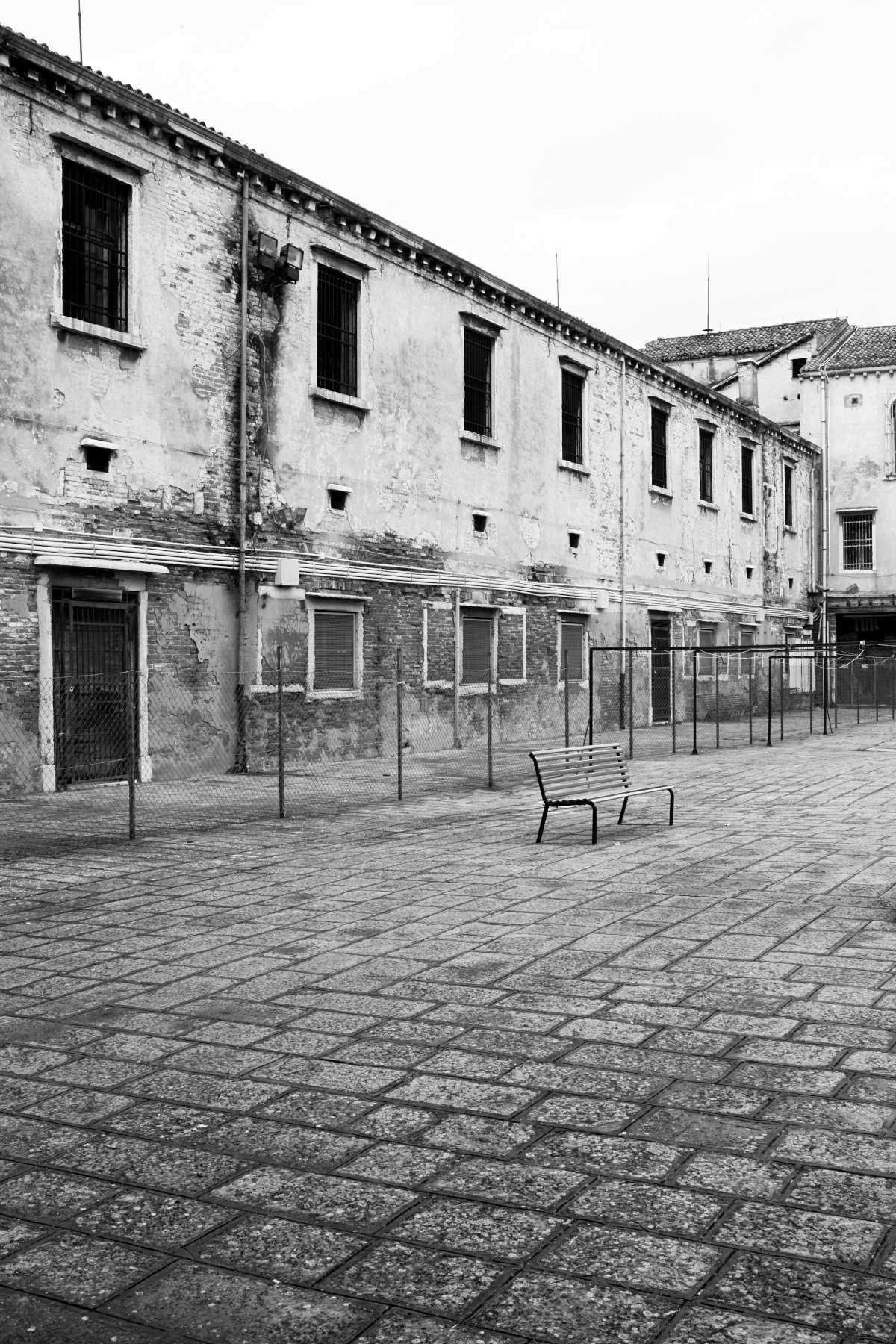Maurizio Cattelan, Bintou Dembélé, Simone Fattal, Claire Fontaine, Sonia Gomes, Corita Kent, Marco Perego & Zoe Saldana, and Claire Tabouret. They are the artists who will make up the Holy See Pavilion at the 60th International Art Exhibition of the Venice Biennale. The Vatican City ’s Dicastery for Culture and Education is taking part in the 2024 edition of the Biennale by dedicating the Holy See Pavilion to the theme of human rights and the figure of the last ones, a central pivot of the Pontificate of Pope Francis, who on April 28 will give us the immense joy of visiting the Pavilion, the first Pontiff in history at the Venice Biennale.
The exhibition, titled With My Eyes, runs from April 20 to Nov. 24, 2024. It comes as a first for La Biennale di Venezia, thanks to the physical and conceptual installation inside the Giudecca Women’s Detention House, which will host the Pavilion.
Cardinal José Tolentino de Mendonça, Prefect of the Dicastery for Culture and Education of the Holy See and Commissioner of the Pavilion, has entrusted the curatorship to two important curators of the international art scene, Chiara Parisi and Bruno Racine, who have called the eight artists mentioned above to participate, while the Catalogue will be edited by Irma Boom and will be published by Marsilio. The project is distinguished by the coexistence of an artistic community that is born defying convention, a new entity that reflects the diversity and unity of distant lives. Every initiative, from workshops to installations, dance to film, performance to painting, is an expression of this shared energy, in line with the urgency of the multifaceted dialogue proposed by Pope Francis. Tours of the Pavilion, by reservation only, led by the prisoner-conferencers, will challenge the desire for voyeurism and judgment toward artists and prisoners themselves, eroding the boundaries between observer and observed, judging and judged, to also reflect on power structures in art and institutions.
Cardinal José Tolentino de Mendonça explains how "it is certainly no coincidence that the title of the Holy See Pavilion wants to focus us on the dramatic nature of the representations of the gaze; but not a metaphorical gaze, detached from reality, comfortably protected by that anonymous voyeurism that contemporaneity has globalized. The title With My Eyes contains within itself something both disruptive and prophetic; it proposes a step in a different cultural direction, questioning this our time in which human vision is increasingly deferred and less direct, captured by the artifice of screens and the explosion of digital devices. Will we still know what it is to ’see with our own eyes’?"
For Chiara Parisi, the strength of the project lies in its underlying idea: “In a surprising corner of the world, artists and female inmates join expressive forces in an unusual collaboration, prison reality and unlimited artistic expression meet and seduce each other: this is the heart of the Holy See Pavilion at the Biennale Arte 2024, a project with an incredible visual narrative. With My Eyes invites us to explore the stories and desires of those living inside the prison through projects, workshops, works, poems, and vital spaces such as gyms and gardens. The exhibition you will discover is dynamic an interweaving of relationships that have evolved over time, in an environment where being observed or judged need not enter and that reflects what we desire for ourselves, wherever we are. The path through the Pavilion, without telephones or documents, will allow the women prisoners to guide you ’through their eyes,’ revealing how beauty and hope are woven into daily life and how the need for freedom persists in the complexity and criticality of life.”
Bruno Racine starts with a question that seeks an answer: "How can the historically handed down concept of the ’national pavilion’ be interpreted today? The peculiarity of the Holy See, a singular state lacking a national art scene, prompted us to experiment with a new formula. The Giudecca Women’s Prison House was the answer. The choice of venue, then, is a manifesto, a statement. Artists from various backgrounds and without distinction of faith come together in this place to bear witness to a universal message of inclusion, collaborating closely with the inmates and enriching the project with their artistic and relational work. Visitors are invited to immerse themselves in this intense poetic experience, deprived of their digital devices and guided by trained female inmates, thus embarking on a journey that challenges preconceptions and opens new perspectives on art as a means of human expression and connection. Although it is forbidden to take photographs, we trust that this experience will remain in the visitor’s memory...with their eyes."
The project’s Institutional Partner and host is the Ministry of Justice - Department of Prison Administration, which through the words of Department Head Giovanni Russo expresses great happiness for the collaboration: “Art is an effective and powerful means of communication, capable of exploring the language of emotions in all its nuances; a means of social communication capable of conveying a testimony of our humanity and diversity. The Holy See’s innovative idea of setting up a Pavilion inside the Venice Women’s Prison House makes the entire Prison Administration proud, as it fully recognizes itself in the values expressed by the Church and its commitment to the salvation of every person, directing its compass toward the direction and formation of consciences.”
The presence of the Holy See for this edition of the Biennale Arte and for the next two editions will see the support as main partner of Intesa Sanpaolo, which has chosen to support the Dicastero per la Cultura e l’Educazione in this artistic and human journey. Paolo M. Grandi, Chief Governance Officer Intesa Sanpaolo, commented, “Social and art will find an intelligent synthesis in the project of the Holy See Pavilion at the Biennale Arte 2024, which Intesa Sanpaolo is honored to support. One thousand people at Intesa Sanpaolo work every day in social work to implement programs and initiatives, with a relevant focus on prison communities. And with a collection of 35,000 works and the Gallerie d’Italia museums, the Bank is a leading player in the international art scene. Accompanying the realization of the Pavilion, with its two souls, means for us to contribute with full consistency to the dissemination of the good and the beautiful, both of which are the basis of our commitment.”
The Pavilion’s exhibition design and production are entrusted to COR arquitectos and Flavia Chiavarolistudio. The goal of the exhibition proposal is to bring visitors to a unique personal experience through an encounter with one of those realities that are so often left on the periphery and relegated to the margins of contemporary artistic debate. The online platform for booking guided tours will be managed by CoopCulture.






The title of the Pavilion of the Holy See curated by Chiara Parisi and Bruno Racine, With My Eyes, is borrowed from a fragment of poetry that refers to an ancient sacred text and an Elizabethan poem, “I do not love you with my eyes” (Shakespeare, Sonnet 141) echoing verses 42.5 of the Book of Job, “My eyes have seen you.” A cross-fade that results in an action where “seeing” becomes synonymous with touching with the gaze, embracing with the gaze, allowing a dialogue between sight and perception.
The content of the Pavilion embraces workshops, installations, dance, film, performance and painting. Within it, everything is the result of an energy that defies artistic and prison conventions, where pragmatic projects intertwine with the creativity of usually parallel, unrelated worlds. Words and images meet through female inmates, artists and poets contributing to the artistic and historical narrative of the place. The visit to the Pavilion, available by reservation only, is a guided tour led by the women inmates. This project aims to open unprecedented perspectives on social and artistic dynamics, challenging prejudices and conventions, reflecting on power structures within art and institutions.
The Holy See Pavilion thus intends to establish itself as a place of life and encounter, a cosmos in which artistic and social norms are reinterpreted, representing a heterotopia that reflects and subverts traditional spaces. Meetings with artists and curators, moderated by Hans Ulrich Obrist, enrich the project, interweaving voices and stories.
Let’s take a closer look at the works. Maurizio Cattelan ’s intervention will feature a large outdoor artwork on the facade of the Chapel that will be striking both in size and emotional impact. The artist will contribute to the special issue dedicated to the Venice Biennale of “L’Osservatore di Strada,” an editorial proposal that will see a direct collaboration with women prisoners, turning them into actresses in the editorial process. Simone Fattal ’s project, on the other hand, is a journey of self-discovery through the creation of enameled lava plaques transformed into canvas in which poems, narratives, and verses by the inhabitants of the House are woven. All this will create a visual dialogue that will welcome visitors from the moment they enter the women’s prison. Claire Tabouret, on the other hand, creates portraits of inmates as children and their younger loved ones. Each portrait is a reminder of dignity, identity and beauty: art becomes a vehicle for personal rediscovery, a way to see oneself through a different lens, celebrating one’s uniqueness. The portraits, inspired by actual photographs provided by female inmates, stand as symbols of rediscovery and reappropriation of self, and will be installed in a large picture gallery, housed in the room adjacent to the Chapel.
In the central courtyard of the Giudecca prison, Claire Fontaine presents We are with you in the night, an invitation to break free from symbolic boundaries and live free, even from prejudice. The work dialogues with a second light installation, White Sight, located at the end of the entrance corridor. The artist duo offers inmates the experience of the “Feldenkrais method” as a way to practice mindfulness through movement. Choreographer and dancer Bintou Dembélé, on the other hand, brings an energetic and vibrant choreography created specifically for women prisoners and their participation. The choreography brings to life a performance that celebrates resistance and independence, telling stories of liberation in support of women’s strength, and stories of prohibition, where women cannot express themselves. Sonia Gomes presents an installation composed of suspended sculptures, entitled Sinfonia. The work is balanced between the theatrical balconies and confessionals of the Chapel inside the prison and forms a symbolic bridge connecting the original function of the place, the Baroque convent for “reconverted” women, with current prison life and the stories of women from around the world. The addition of a sound installation further enriches the experience and helps create an even more immersive environment.
The Cafeteria area will feature works by pop art icon Corita Kent, a historical artist, activist and pacifist. Her works serve as a vehicle to spread an artistic message that combines aesthetics and social mission. Finally, artist and director Marco Perego and American film star Zoe Saldana present a short film shot in the heart of the Venice-Jiudecca women’s prison, immersing the viewer in an introspective journey in search of the deeper meaning of freedom. The film will be presented in the inmates’ meeting room.
 |
| Vatican brings Maurizio Cattelan and Claire Fontaine to Venice Biennale |
Warning: the translation into English of the original Italian article was created using automatic tools. We undertake to review all articles, but we do not guarantee the total absence of inaccuracies in the translation due to the program. You can find the original by clicking on the ITA button. If you find any mistake,please contact us.